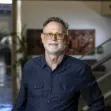Environment
50 Years Later, Silent Spring Still Causing Controversy
50 years ago yesterday, Rachel Carson's seminal book Silent Spring was published. Wendy Kock examines how the book, which is credited with inspiring the modern environmental movement, is still sparking controversy to this day.
Despite Their Benefits, Urban Trees Declining Across America
A recent study by the U.S. Forest Service shows that out of 20 cities surveyed, 19 showed a decline in tree cover. With their demonstrated benefits to public health, property values, and reducing pollution, Tod Newcombe asks why they're disappearing.
Collaboration Breeds New Capabilities in Philadelphia
Alex Vuocolo reports on the new model of multi-stakeholder collaboration that is bringing acclaimed public spaces, and economic growth, to the city of Philadelphia.
Buds of LEED-ND Begin to Bloom
LEED for Neighborhood Development (LEED-ND) hasn't exactly unleashed a flurry of new sustainable, dense development. But, as the economy strengthens, innovative projects in Oakland, Syracuse, and Milwaukee are beginning to take flight.
Why We Should Plan According to Ecosystem, Rather Than Artificial Boundaries
The often arbitrary boundaries drawn up to define territory limits how most planners determine the extents of their projects. Neil Chambers argues why we, and the planet, would be better served if we planned according to natural characteristics.
Los Angeles Considers How to Close its 'Missing Link'
Long Beach's Press Telegram explores the options for completing a 4.5-mile stretch of the Long Beach (710) Freeway connecting Alhambra to Pasadena, a controversy that's been brewing for five decades.
Taking Health into Account
Do you know the effect your spiffy new development will have on the neighbors' health? Aaron Wernham and the Kresge Foundation think you could use a health impact assessment.
Chicago Neighborhoods Consider Life After Coal
Chris Bentley reports on the complex discussions centered around what to do with the sites of two massive coal plants closing this month in Chicago. As Bentley notes, "what happens to these 132 acres in Chicago could have nationwide implications."
Vacant Lots Ripe for Parks, and Legal Troubles
Nate Berg reports on the legal problems that can arise when a good Samaritan tries to create a park on a vacant lot.
Taking Stock of California's Leadership in Integrated Regional Planning
A new report from the NRDC and Move LA documents the implementation of California's landmark SB 375, the nation’s first law to link transportation and land use planning with greenhouse gas emissions.
How the 'Cloud' Precipitates Pollution Across America
In the first article of a series exploring how the physical structures that support the explosion in digital information are effecting the environment, James Glanz examines the wasteful manner in which technology companies consume energy.
Is CEQA Really to Blame for Preventing Infill Development?
According to new figures from California's Annual Planning Survey, the state's environmental law is low on the list of barriers to infill development, writes Ethan Elkind.
Gritty Philly Tries on a New Reputation: Sustainable City
Darby Minow Smith profiles Katherine Gajewski, Director of Philadelphia's Office of Sustainability, and looks at the efforts she's leading to give vision to the next phase of the city's history.
CA High Speed Rail Receives More Good News from Feds
Two days after the CA High Speed Rail Authority received federal environmental streamlining of the 60-mile Merced to Fresno segment, the Federal Railroad Administration announced they will do the same for the 114-mile Fresno to Bakersfield segment.
Twin Cities's Parks Adapt for the 21st Century
Susan Klemond looks at what it will take to protect and expand the Twin Cities's tremendous legacy of parks to meet the changing demographics and needs of the area's population.
Global Urbanization's Threat to the Global Environment
In the developed world, increased urbanization can be a net boon for the environment. Yet, writes Bryan Walsh, if not planned for carefully, the rapid urbanization of developing world could have a dramatic impact on climate change and biodiversity.
Art and Empowerment Define a Community Development Success Story in Houston
Decaying and disused buildings litter many American inner-city neighborhoods. In Houston, one imaginative project turns potential into pride and empowerment by creating unique, new uses for old homes.
What Makes a City Smart?
Does a smart city have to pursue sustainability goals? Does it have to utilize the internet to involve citizens? Boyd Cohen tries to put some parameters around the discussion of smart cities - a nebulous term that means many things to many people.
How Andres Duany Envisions the Future by 'Translating' the Present
Rick Hampson explores the New Urbanist vision for how cities will be designed and planned over the next 30 years, as told by the movement's co-founder, Andres Duany.
New L.A. Bridge Designs Reflect a City Intent on Serving People, Not Just Cars
Sam Lubell reports on the proposed designs for a new Sixth Street Viaduct in Los Angeles, which incorporate Angelenos' hopes for a more walkable and park-friendly future.
Pagination
Urban Design for Planners 1: Software Tools
This six-course series explores essential urban design concepts using open source software and equips planners with the tools they need to participate fully in the urban design process.
Planning for Universal Design
Learn the tools for implementing Universal Design in planning regulations.
Heyer Gruel & Associates PA
JM Goldson LLC
Custer County Colorado
City of Camden Redevelopment Agency
City of Astoria
Transportation Research & Education Center (TREC) at Portland State University
Jefferson Parish Government
Camden Redevelopment Agency
City of Claremont


































